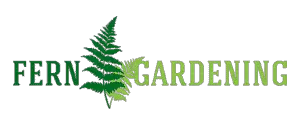When space in the garden is limited, every plant has to earn its place. Ferns are highly versatile and there are lots of creative ways that they can be used in a small garden.
Ferns give an excellent pay off in terms of their visual impact, and the range of ways that they can be incorporated into a garden design. Ferns naturally complement wood, stone and water, and so planting beside these materials always works well. Many ferns can also survive in shallow soil, making them ideal for pots, vertical planters and hanging baskets. Ferns can even grow in crevices in walls and on trees, meaning every last inch of space can be used, and enhanced by their elegant beauty.
Ferns also work well with a range of design styles – somehow they have a timeless quality that equally matches the clean lines of modern design, the shabby chic of classic cottage gardens, or the formal patterns of Moorish gardens. Ferns provide color and texture, and go with anything.
Here are ten of the best ways that ferns can be used to add style to a small garden.
1. Make the most of pots
Never underestimate the value of pots.
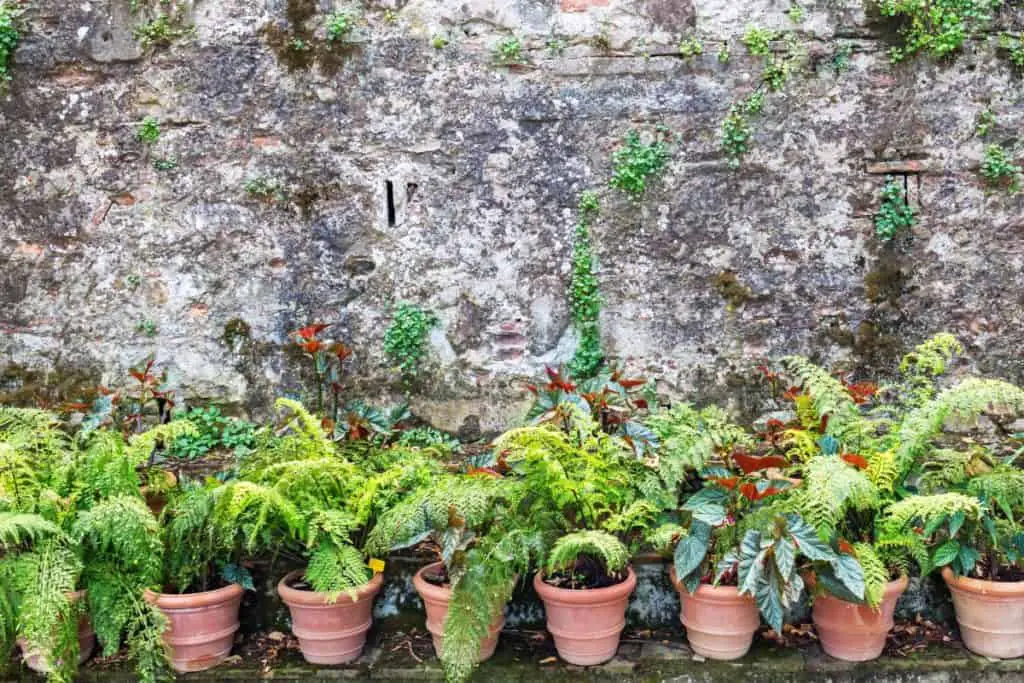
They allow you to optimize the soil conditions for your plant, meaning varieties that would not naturally grow side by side can be mixed and matched to your heart’s content. Pots can be moved, allowing you to experiment with different designs, and cold-sensitive ferns can be carried into safety when winter comes. You can use pots to decorate decks and patios, increasing the available room for planting.
Finally, ferns can be chosen to match almost any design of pot – from cascading fronds falling from a raised plinth, to compact ornamental ferns in shallow bowls.
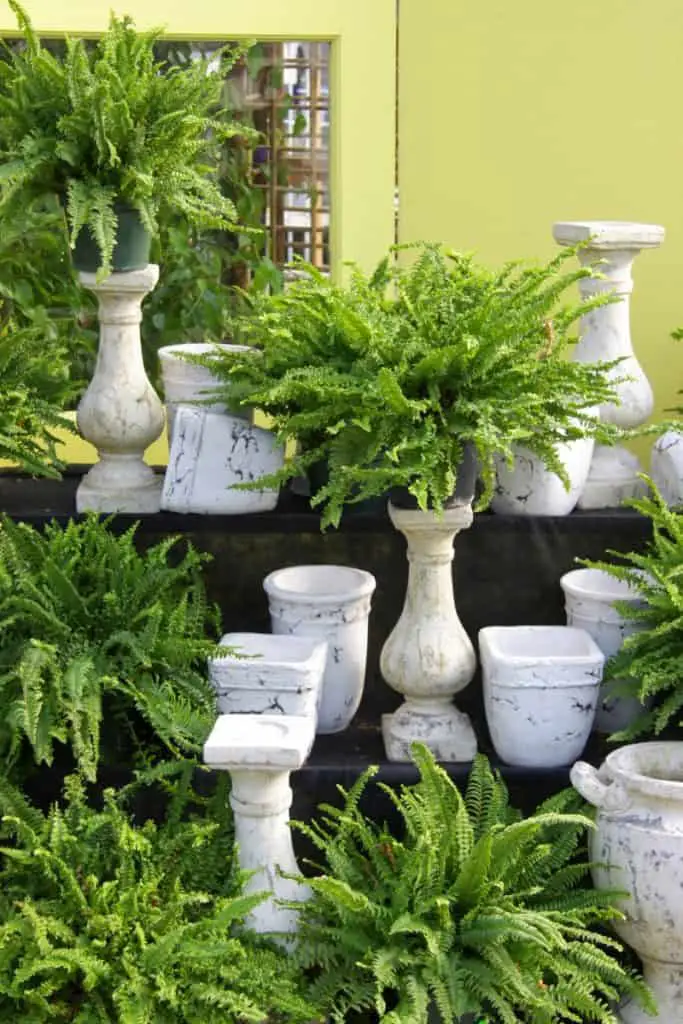
Pots offer maximum versatility.
2. Look up to hanging baskets
Sticking with the theme of maximizing use of space, ferns can also thrive in hanging baskets. Many varieties can put on majestic amounts of falling fronds from the apparently meager resources of a shallow basket.
Classic ferns for this planting style are the Boston fern, Kangaroo paw fern, and Staghorn fern.

Boston fern
- Nephrolepis exaltata
- Evergreen
- Partial shade
- Height: up to 1 m
- Soil: acid or neutral. Moist, well-drained.

Kangaroo paw fern
- Microsorum diversifolium
- Evergreen
- Prefers partial shade
- Height: up to 0.5 m
- Soil: acid or neutral. Moist, well-drained.
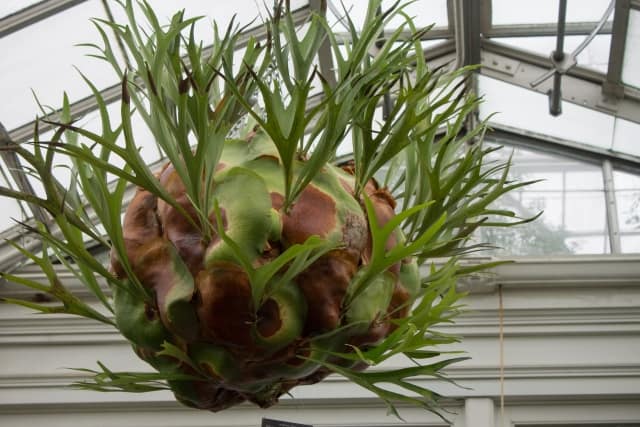
Staghorn fern
- Platycerium bifurcatum
- Evergreen
- Prefers partial shade
- Height: up to 1 m
- Epiphytic (but can be grown on loam). Keep moist, well-drained.
Hanging baskets are an excellent way of capturing garden from even the smallest and most unpromising space. Even a balcony is enough.
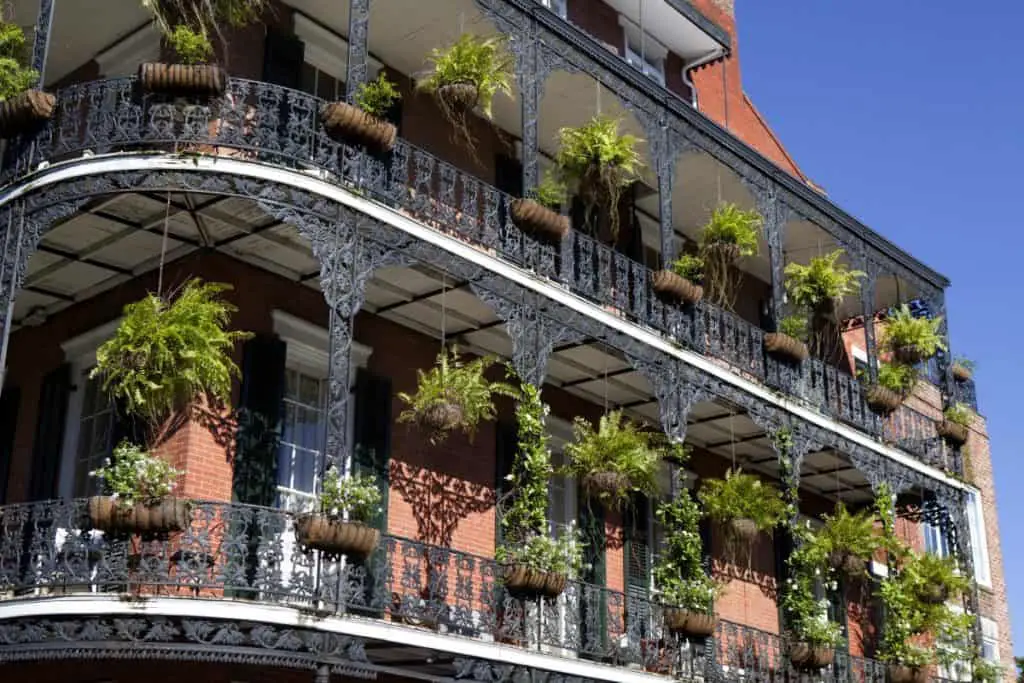
3. Use tiered containers
Because ferns can thrive in a limited amount of soil, they also lend themselves well to container planting. This can be a good way to make use of limited space, using tiers or shelves to cram as much greenery as possible into a small garden.

There are lots of styles and types of containers available nowadays, from racks of pots, to rustic troughs, to fabric pouches, to recycled shipping pallets. Really, the only limit is your imagination. So, if you have a dull bit of fence, or a blank wall, setting up a multi-storey planter against it is an ideal way to add life to a cramped space.
4. Experiment with vertical gardening
The most full-on version of this principle of using every inch of space to add greenery is the vertical garden.
This modern design idea is very fashionable at the moment, and especially popular in urban spaces where bare soil at ground level is scarce. Vertical gardening can be a simple as fixing troughs or window boxes in rows and columns up a wall, or as complex as a custom-built lattice of pouches fixed to a framework with its own irrigation system.
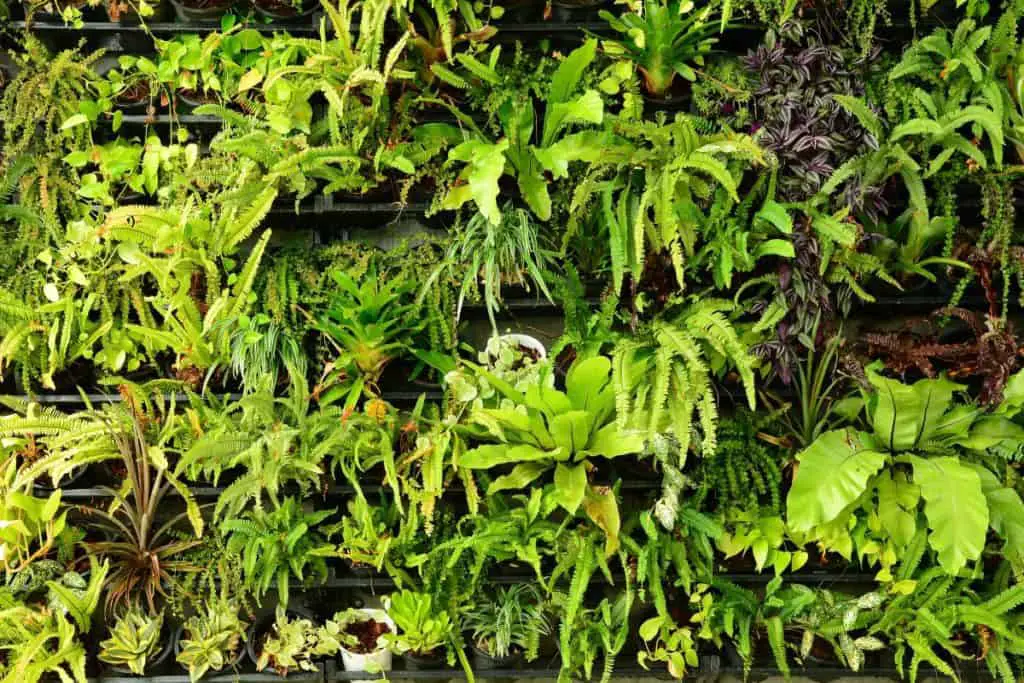
The ultimate form of vertical gardening is the “living wall” where the foliage is so abundant that it fills all the space, hiding the pockets, troughs, or hanging pots that the ferns are planted into. It’s hard to top the sophistication of this natural artwork.
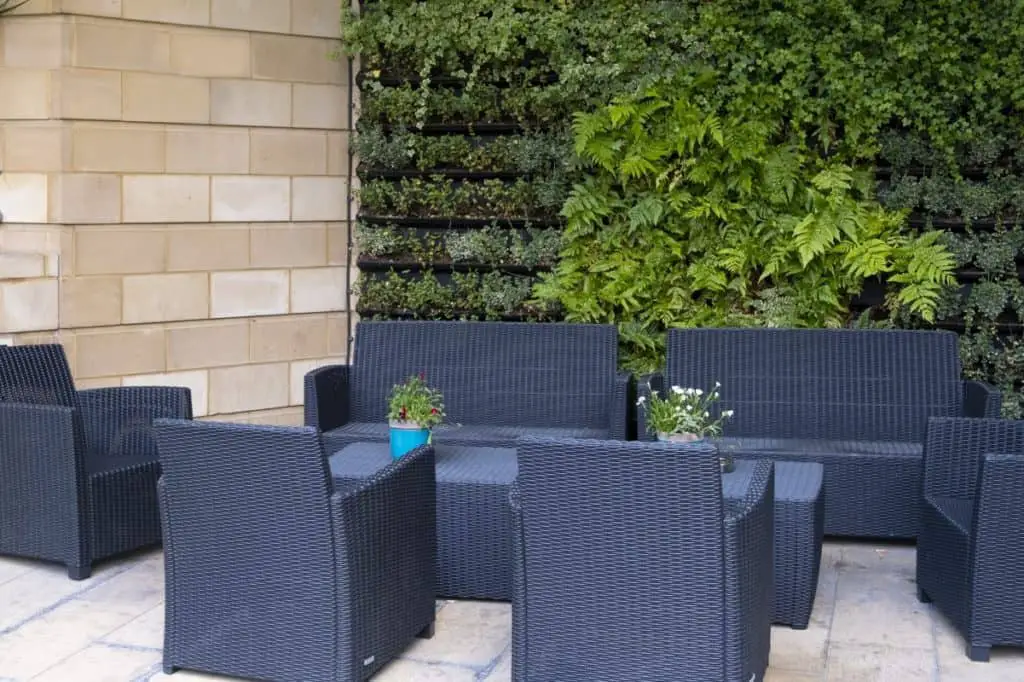
5. Let them climb the walls
Living walls may be the latest in urban design, but ferns were doing vertical gardening long before it was cool.
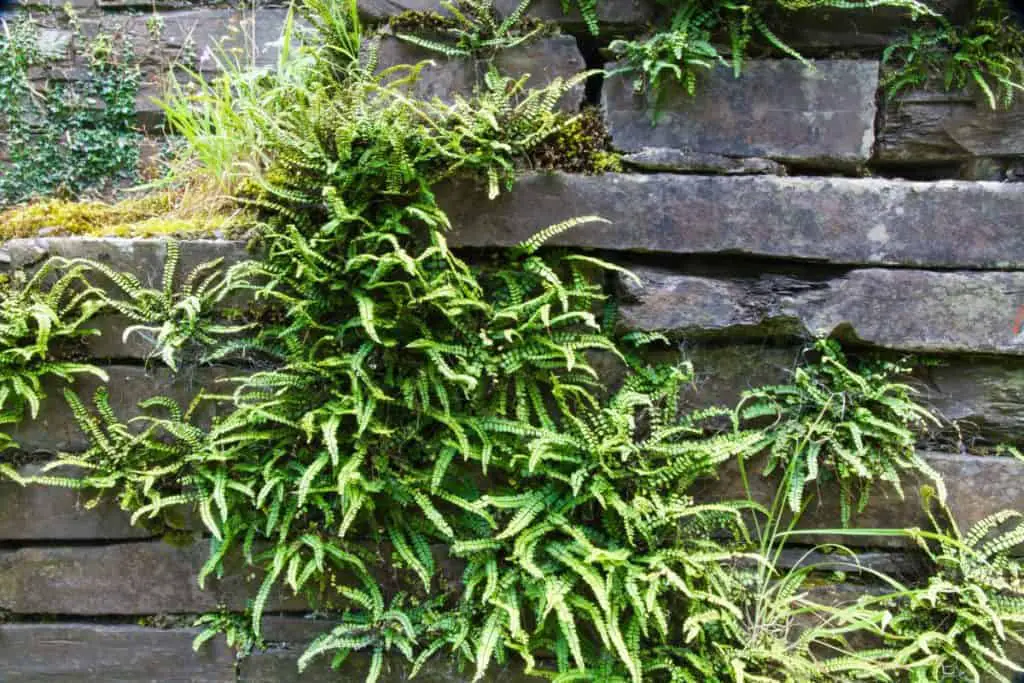
Many varieties of ferns are “epiphytic” and can grow on the surface of wood or stone, eking nutrients out of rainwater and the thinnest layers of soil. That allows them to colonize the crevices and cracks in walls.
A modern brick wall is unpromising territory, but older stone walls are ideal. Rough stone walls are best of all, and can be closer to a rockery if the spaces are packed with soil. Many show gardens exploit this tendency of ferns to infiltrate walls, by deliberately building rough walls on the edge of paths or slopes to make a vertical space to show off more foliage.
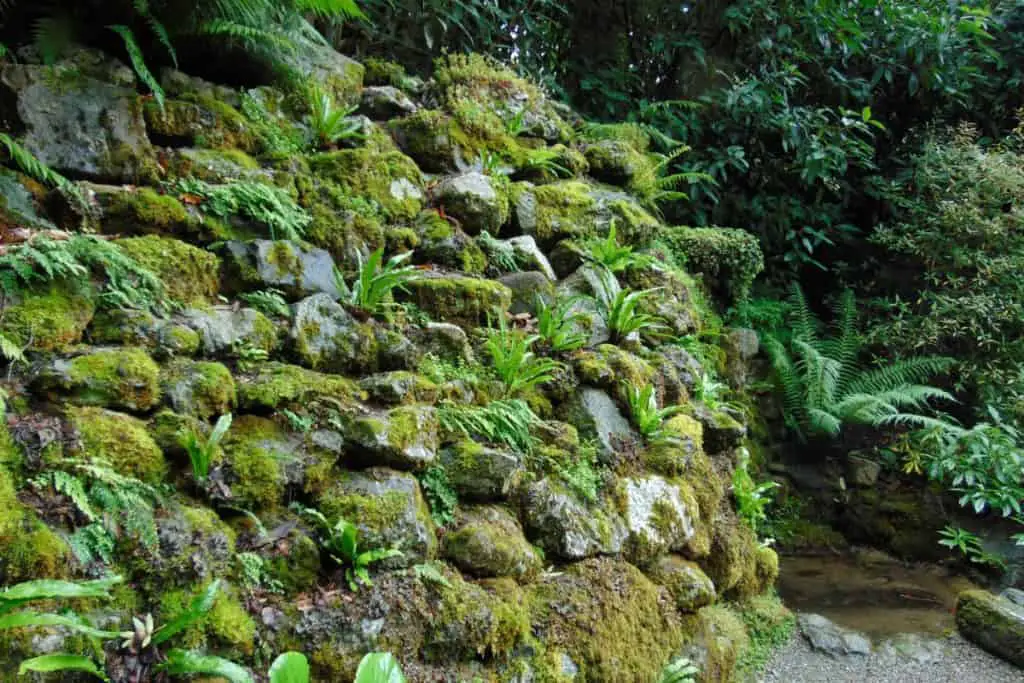
While most of us lack the grand estates to really pull this design off, smaller scale planting within the cracks of walls can be beautiful and effective.
6. Frame sculptures and art
The complement between fern fronds and stone is intrinsically pleasing. This may be because it is a contrast often found in nature, so feels right, but it also holds with sculpted stone.
Ferns are excellent for framing art in the garden. They provide a textured backdrop that helps set the stonework into the natural environment, and softens the edges of the artificial addition to the space.

At its best, art works in harmony with nature, with each enhancing the other. Ferns seem to be the perfect transitional plant – welcoming art into the garden and making it seem like it belongs. Somehow, the presence of fronds waving beside the art work makes it seem like it has always been there as part of the garden.
7. Surround water features
The other perfect complement for ferns is water. Ferns naturally thrive in humid and moist conditions, meaning they are often found in the wild beside streams, rivers and waterfalls. This natural affinity can be used in even small gardens by partnering ferns with water features.
If space allows, then a naturalistic cascade over stones and pebbles can be bordered with ferns – their fronds forming the perfect fringe to make the feature look more authentic.
Alternatively, ferns can still partner beautifully with smaller water features, such as sculptures or busts. It is a classic look that again seems to enhance both plants and landscaping.
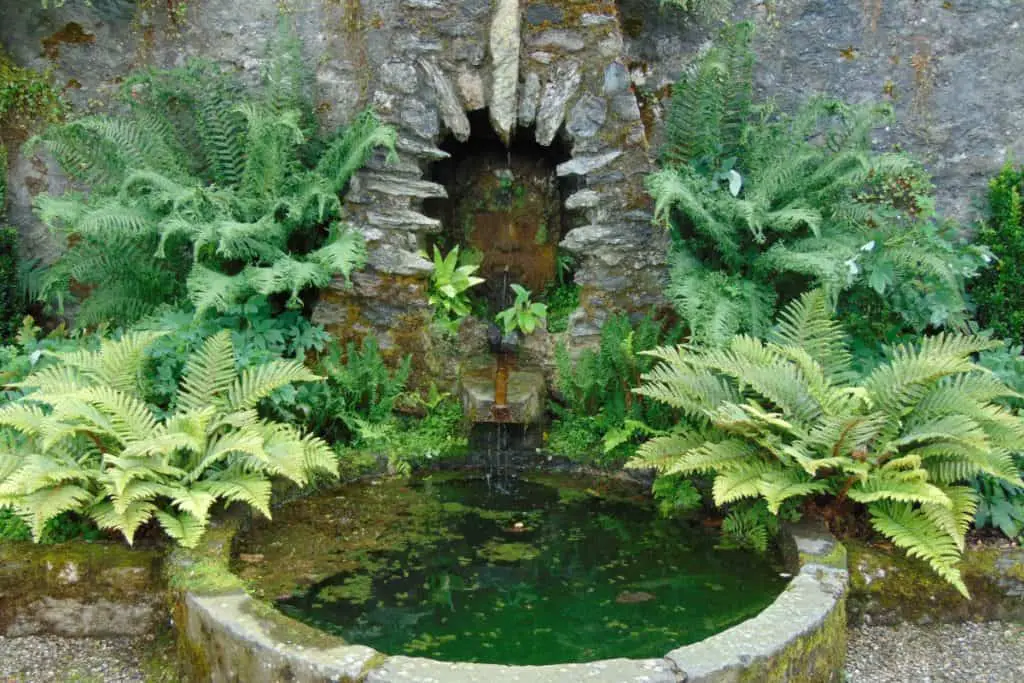
8. Bring in the dead wood
Another way to recreate the natural look on a small scale is to partner ferns with wood. Driftwood, logs or carvings can be used as a complementary texture and an eye-catching, but natural-looking contrast.
Driftwood art and ferns form a visually pleasing pairing, just as for stonework, but ferns can also be planted within the body of the wood, to reproduce the natural effect seen where ferns and moss are often the first to find an anchor on fallen trees in woodland settings.
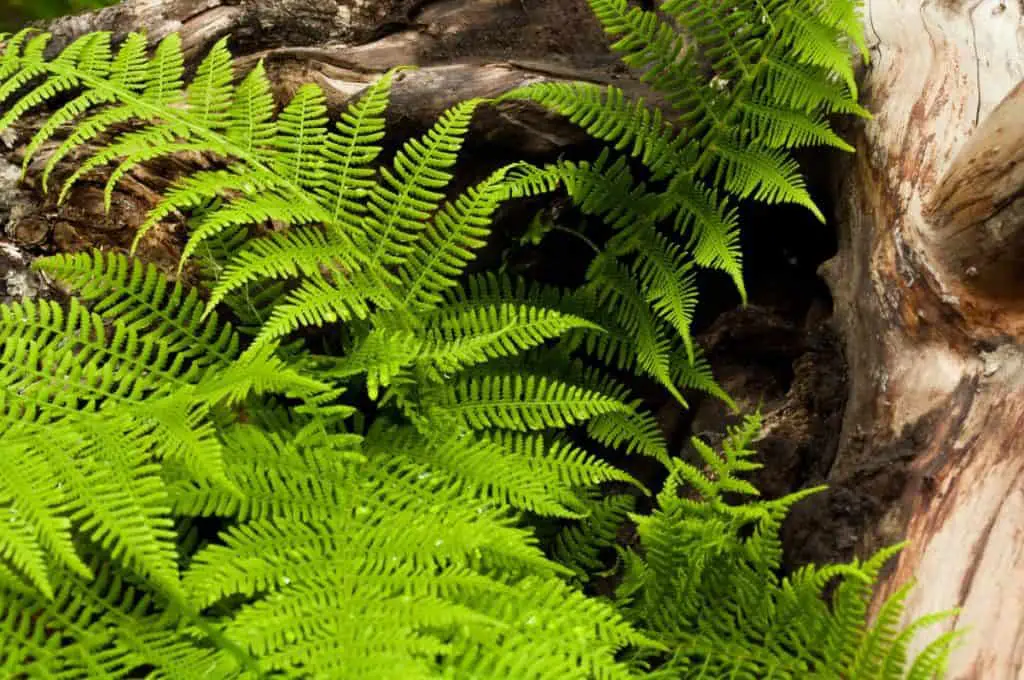
The old tradition of a “stumpery” built on this natural kinship, recognizing the beauty inherent in the partnering of weather-worn wood and feathery fronds.
9. Layer fern planting
Ferns come in all shapes and sizes. This variety can be used effectively, even in small beds, by layering the planting to provide visual impact at multiple levels.
Planting the front of a border with low-growing varieties like Japanese painted ferns, the middle with waist height varieties like King fern, and the back with whoppers like Royal fern can draw the eye upwards through layers of interest.
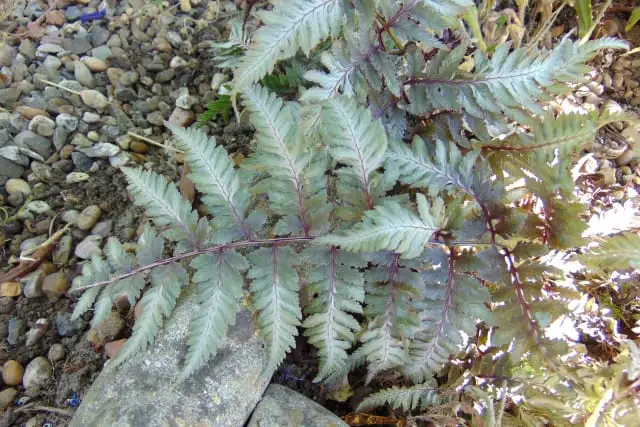
Japanese painted fern
- Athyrium niponicum
- Deciduous
- Prefers partial shade
- Height: up to 0.5 m
- Soil: acid, neutral or alkaline. Moist, well-drained.
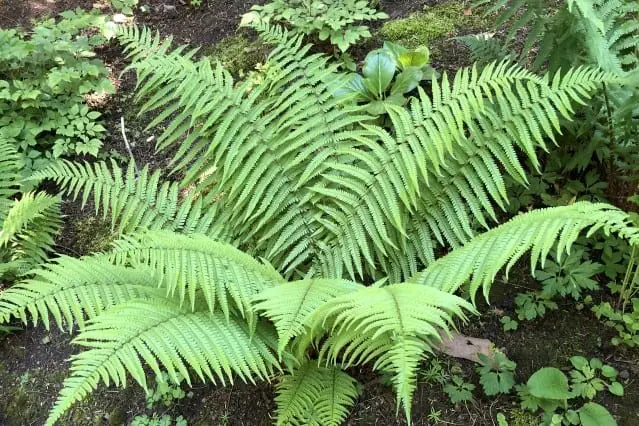
King fern
- Dryopteris affinis
- Semi-evergreen
- Shade, partial or full sun
- Height: up to 1.5 m
- Soil: acid, neutral or alkaline. Moist, well-drained.
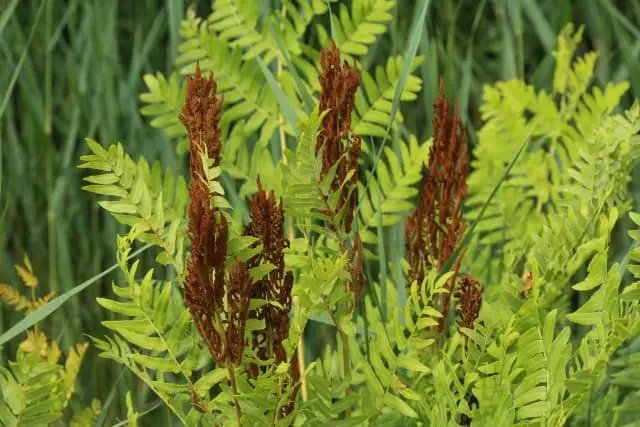
Royal fern
- Osmunda regalis
- Deciduous
- Full or partial shade, and full sun
- Height: up to 2.5 m
- Soil: acid, neutral or alkaline. Moist, poor drainage tolerated.
For the really ambitious, a tree fern such as Dicksonia antarctica would be the crowning glory.

Soft tree fern
- Dicksonia antarctica
- Evergreen or semi-evergreen
- Full or partial shade
- Height: up to 4 m
- Soil: acid or neutral. Moist, well-drained.
This could overwhelm a courtyard or very small garden of course, but if space allows, it would provide a breathtaking wall of foliage.
10. Use ferns to fill awkward corners
One of the trickier problems in small gardens is occupying awkward spots where the landscaping is working against you. Corners that are in shadow for most of the day, small gaps beside porches or decking, odd angles, and other “dead space” can be difficult to fill.
Ferns can come to the rescue here too. They are tolerant of shade, and naturally fill the space they occupy as the fronds rise from the crown to form a shuttlecock. No leggy shrubs or lopsided growth here – many varieties of ferns will naturally grow in dense drifts that can provide a block of green.
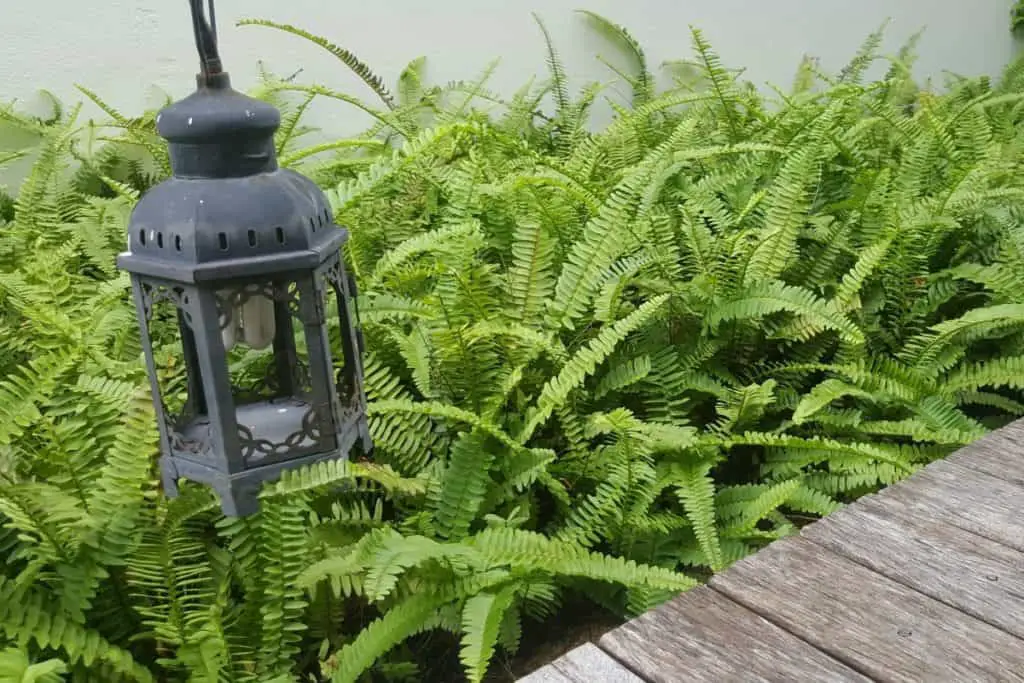
If you have a small garden with a corner you just can’t do anything with, try a fern. You’ll most likely be happy with the results.
